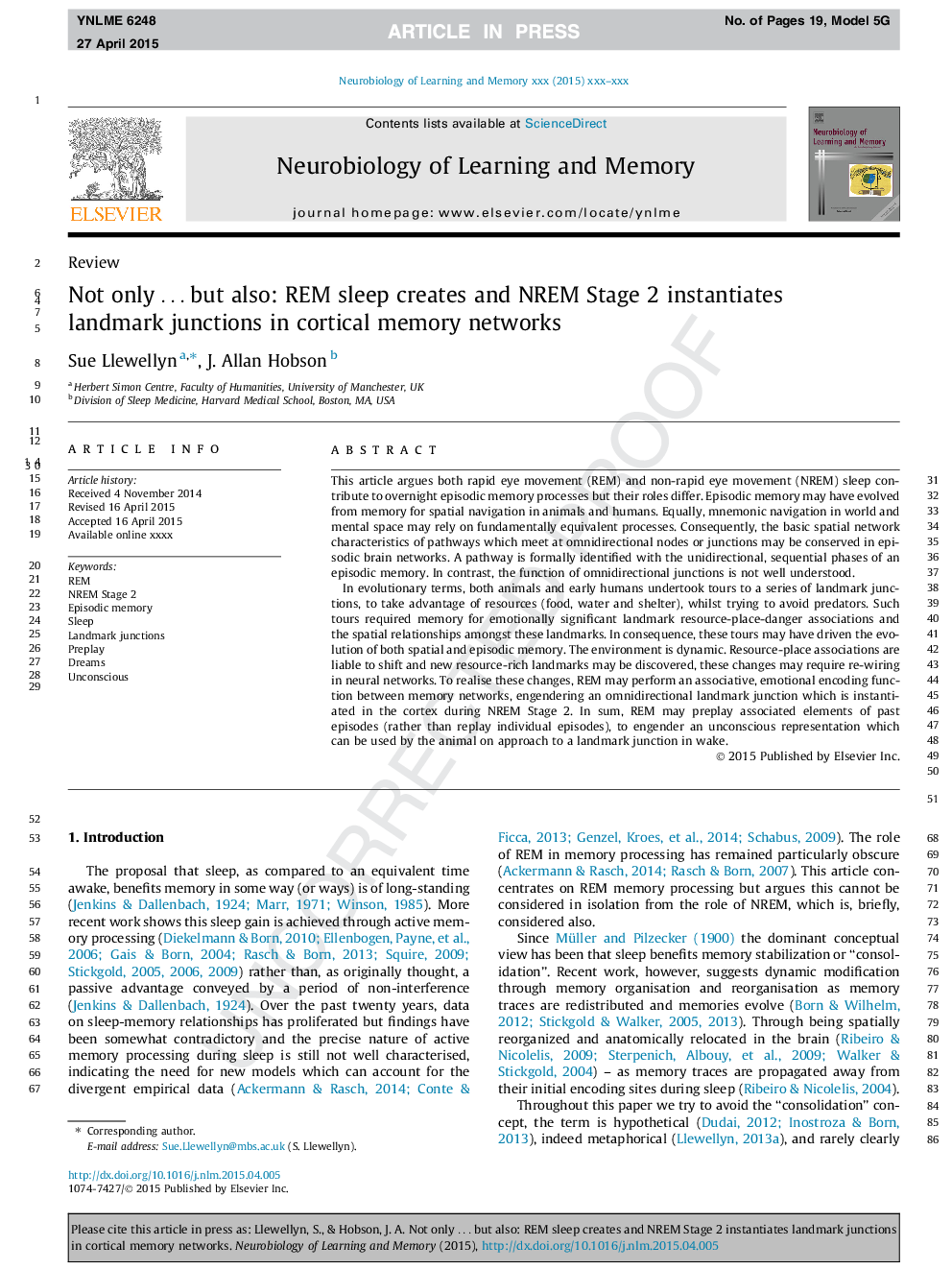| Article ID | Journal | Published Year | Pages | File Type |
|---|---|---|---|---|
| 7299442 | Neurobiology of Learning and Memory | 2015 | 19 Pages |
Abstract
In evolutionary terms, both animals and early humans undertook tours to a series of landmark junctions, to take advantage of resources (food, water and shelter), whilst trying to avoid predators. Such tours required memory for emotionally significant landmark resource-place-danger associations and the spatial relationships amongst these landmarks. In consequence, these tours may have driven the evolution of both spatial and episodic memory. The environment is dynamic. Resource-place associations are liable to shift and new resource-rich landmarks may be discovered, these changes may require re-wiring in neural networks. To realise these changes, REM may perform an associative, emotional encoding function between memory networks, engendering an omnidirectional landmark junction which is instantiated in the cortex during NREM Stage 2. In sum, REM may preplay associated elements of past episodes (rather than replay individual episodes), to engender an unconscious representation which can be used by the animal on approach to a landmark junction in wake.
Related Topics
Life Sciences
Neuroscience
Behavioral Neuroscience
Authors
Sue Llewellyn, J. Allan Hobson,
